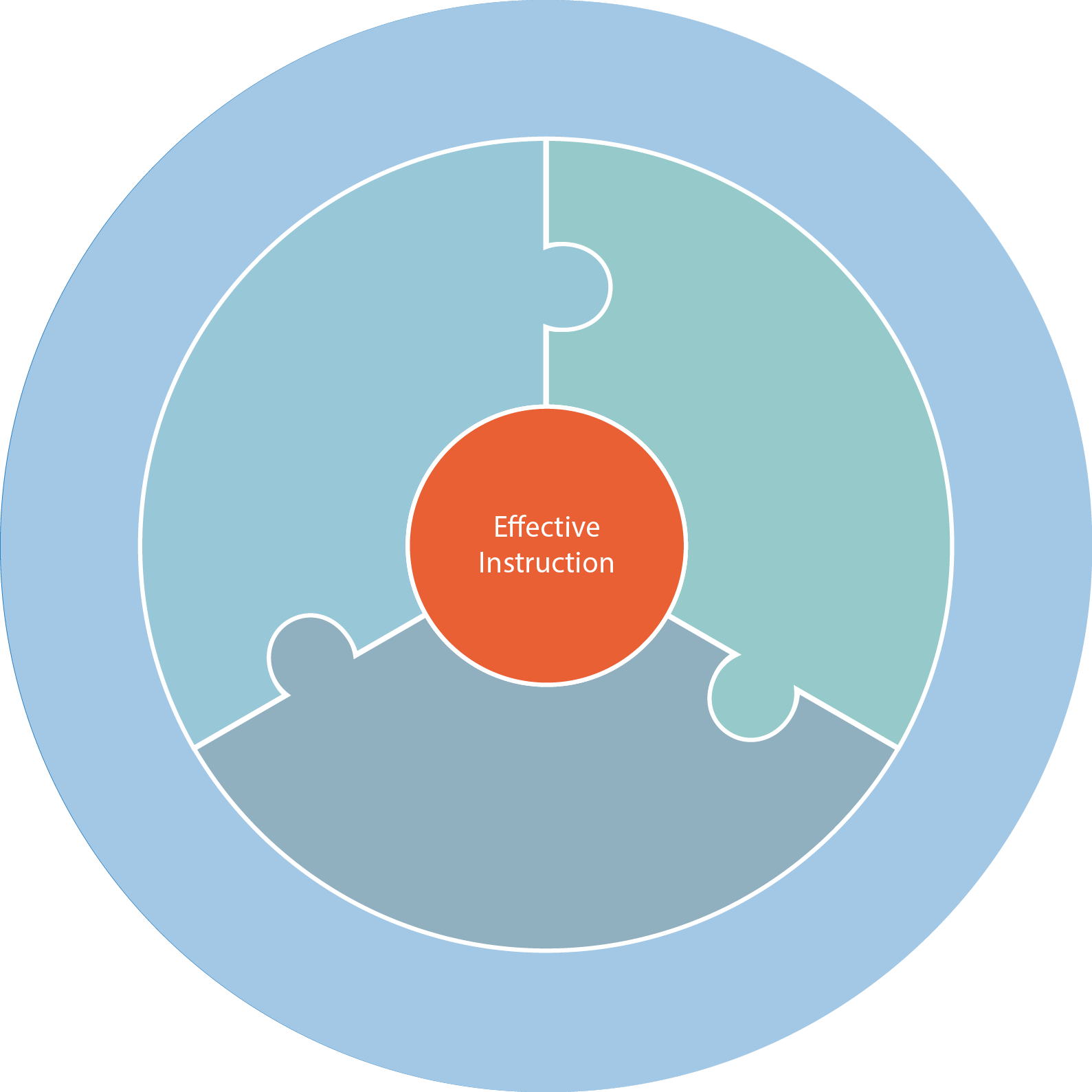1.0 Lever 5
EFFECTIVE INSTRUCTION
All students have rigorous learning experiences because the school ensures objective-driven daily lessons, classroom routines, and formative assessments that yield the data necessary for teachers to reflect, adjust, and deliver instruction that meets the needs of each student.

District Commitments:
District commitments describe what local education agencies do to ensure that schools are set up for success.
-
The district ensures access to high-quality common formative assessment resources aligned to state standards for all tested areas and PK-2nd grade math and reading
-
For assessments that are district provided and graded, the district ensures that schools receive detailed reports within two instructional days
-
The district provides schools with access to student academic, behavioral, and on-track to graduate data (present and historical)
-
The district has effective systems for identifying and supporting struggling learners
-
District policies and practices support effective instruction in schools
Essential Actions
Essential Actions describe what the most effective schools do to support powerful teaching and learning. The first essential action listed under the priority is foundational — schools should address first in continuous improvement efforts, as they provide the foundation upon which the other essential actions develop.
5.1
FOUNDATIONAL ESSENTIAL ACTION
Objective-driven daily lesson plans with formative assessments
-
All teachers create and submit daily lesson plans that include clear objectives, opening activities, time allotments that indicate the amount of time spent on each step of the lesson, multiple, differentiated paths of instruction to a clearly defined curricular goal, including paths to meet the specific needs of students with disabilities and English learners among other student groups, and daily formative assessments along with exemplar responses.
-
Campus instructional leaders review lesson plans frequently for alignment to the standards, the scope and sequence, and the expected level of rigor, and provide teachers with feedback and lesson planning support.
5.2
Effective classroom routines and instructional strategies
-
Three to five instructional strategies (e.g. monitoring aggressively, student-to-student discourse, strategic prompts), classroom procedures, and routines are introduced, modeled, and practiced with consistency and fidelity in all classrooms.
-
Classroom instruction incorporates rigorous, high-quality experiences that promote critical-thinking skills, with differentiated and scaffolded supports for students with disabilities and English learners among other student groups.
-
Teachers maximize instructional time through consistent, efficient, and visible structures (e.g., posted agendas, class opening, homework collection, within-class transitions, and formative assessments).
-
Campus instructional leaders conduct regular walk-throughs and observations to ensure consistent implementation of expectations.
5.3
Data-driven instruction
- Campus instructional leaders review disaggregated data to track and monitor the progress of all students, including students with disabilities and English learners among other student groups, and provide evidence-based feedback to teachers.
- Teachers use a corrective instruction action planning process, individually and in PLCs to analyze data, identify trends in student misconceptions, determine the root cause as to why students may not have learned the concept, and create plans to reteach.
- Teacher teams have protected time built into the master schedule to meet frequently and regularly for in-depth conversations about formative and interim student data, effective instructional strategies, and possible adjustments to instructional delivery focused on meeting the needs of both struggling learners and learners needing acceleration.
- Student progress toward measurable goals (e.g., % of class and individual student mastering of objectives, individual student fluency progress, etc.) is visible in each and every classroom and throughout the school to foster student ownership and goal setting.
5.4
RTI for students with learning gaps
-
All staff are engaged in coordinated and proactive planning to identify students who have significant learning gaps or who lack key foundational skills and provide them with timely interventions throughout the year.
-
All teachers use a student tracking system that includes assessment information, course grades, teacher referrals, and attendance to monitor individual student progress and the intensity and schedule of interventions.
-
Teachers or other school staff keep families informed and involved in the process of providing interventions for struggling learners.

